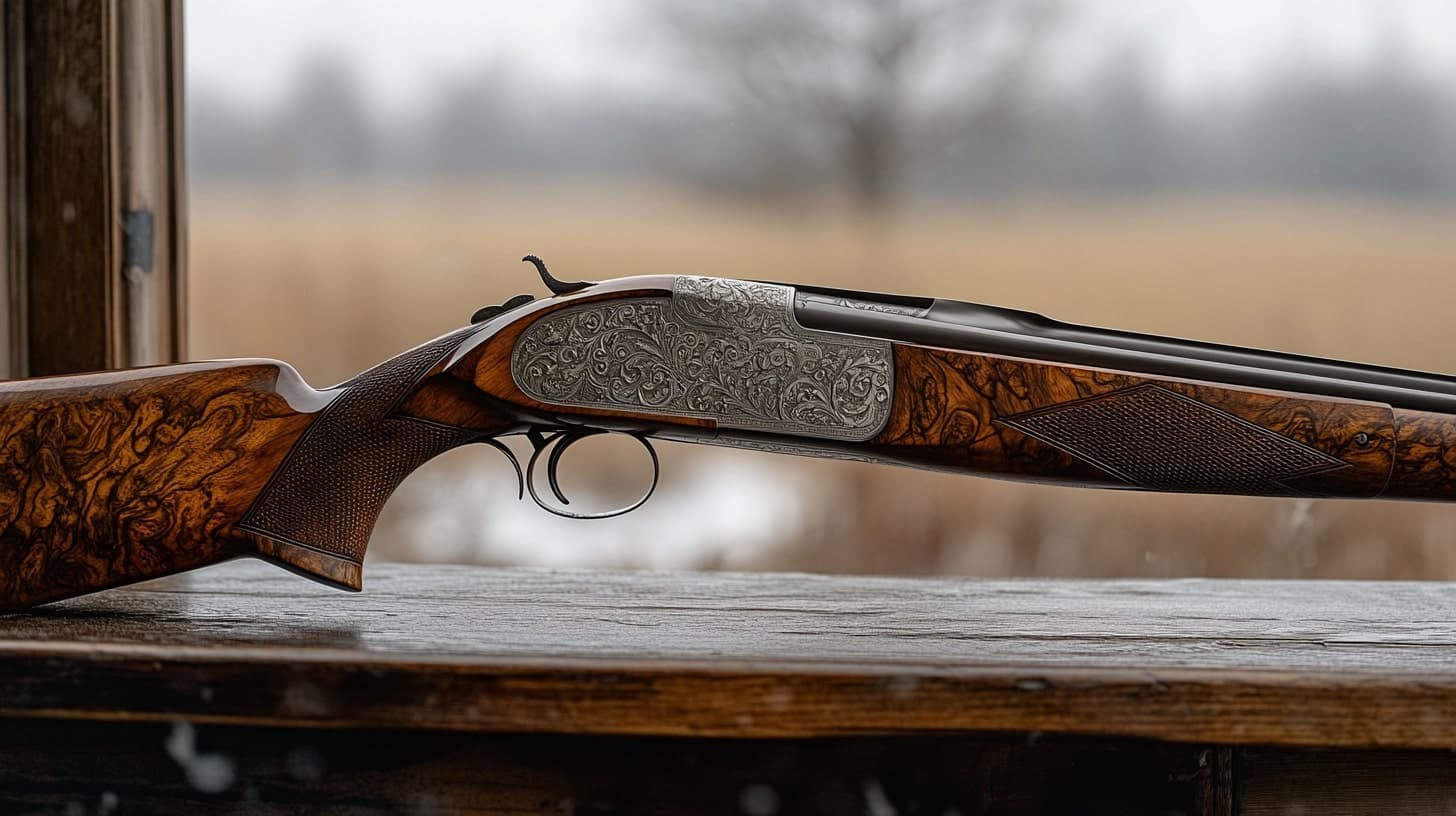For centuries, side-by-side shotguns have been a favorite among bird hunters. Their elegant design, reliability, and quick handling make them a classic choice for upland hunting, waterfowling, and small game pursuits. However, as with any firearm, they come with their own set of pros and cons.
In this article, we’ll take a closer look at the practical applications of side-by-side shotguns for bird hunting, weighing their benefits against their limitations. Whether you’re a seasoned hunter considering a return to a traditional firearm or a newcomer looking for the best option, this guide will help you determine if a side-by-side shotgun is the right tool for you.
The Heritage and Practicality of Side-by-Side Shotguns
Side-by-side shotguns, often referred to as “double guns,” have a long-standing history in hunting culture. Their classic design dates back to the 18th century, and they remain a symbol of tradition in bird hunting circles. Unlike over-and-under shotguns, which are more common in competitive clay shooting, side-by-side shotguns are often favored for their ease of handling in the field.
The wide sight plane and instinctive pointing characteristics of side-by-side shotguns make them particularly well-suited for quick-moving game, such as quail, pheasants, and grouse. Their traditional appeal and practical benefits continue to attract hunters who appreciate craftsmanship and field performance.
Advantages of Side-by-Side Shotguns for Bird Hunting
1. Quick Target Acquisition
One of the biggest advantages of a side-by-side shotgun is its ability to naturally align with a hunter’s line of sight. The wider sight plane makes it easier to track fast-moving birds without the vertical obstruction that can sometimes come with an over-and-under shotgun. This can be particularly useful for shooting in dense cover, where birds can flush suddenly.
2. Lightweight and Balanced
Side-by-side shotguns are often lighter than their over-and-under counterparts, making them an excellent choice for long days in the field. Whether walking through miles of upland terrain or carrying the shotgun through marshes, hunters appreciate the reduced weight.
Additionally, the balance of a side-by-side shotgun allows for smooth, instinctive swings. This makes them particularly effective for shooting at unpredictable angles, where quick adjustments are necessary.
3. Versatility with Choke Selection
Since side-by-side shotguns have two barrels, they can be equipped with different chokes in each barrel. This allows hunters to adapt to varying shooting distances. For instance, a more open choke can be used for the first shot to cover close-range birds, while a tighter choke can be set for the second barrel for birds flying farther away.
4. Easier Reloading and Shell Selection
Unlike pump-action or semi-automatic shotguns, side-by-side shotguns allow the shooter to quickly load and unload shells with a simple break action. This is particularly useful when hunting mixed bird species that require different loads. A hunter can easily switch shells between shots without cycling through a magazine.
5. Classic Aesthetics and Craftsmanship
Many hunters are drawn to side-by-side shotguns for their beauty and craftsmanship. Traditional models often feature exquisite engraving, fine wood stocks, and premium finishes. The aesthetic appeal and historical significance of these shotguns add to their allure, making them not just a tool but also a prized possession.
Disadvantages of Side-by-Side Shotguns for Bird Hunting
1. Less Precision for Longer Shots
While the wider sight plane of a side-by-side shotgun is an advantage at close range, it can be a disadvantage for long-range shots. The horizontal barrel alignment may cause some hunters to misjudge their lead, making it harder to place precise shots at greater distances.
2. Increased Felt Recoil
Due to their lighter weight, side-by-side shotguns tend to produce more felt recoil than heavier over-and-under or semi-automatic shotguns. For hunters who plan on taking numerous shots throughout the day, the added recoil can lead to fatigue and affect shooting accuracy.
3. Limited Ammunition Capacity
Side-by-side shotguns are break-action firearms with a two-shot capacity. Unlike pump-action or semi-automatic shotguns, which can hold multiple rounds, a double-barrel shotgun requires reloading after every two shots. While this isn’t a major issue for experienced hunters, those targeting fast-flying flocks or multiple birds may find the limited capacity to be a disadvantage.
4. Barrel Regulation and Spread
One challenge with side-by-side shotguns is barrel regulation—the way both barrels align their shots to a single point of impact. If the barrels are not properly regulated, the shots may pattern inconsistently, leading to poor accuracy. High-quality double-barrel shotguns are carefully regulated by skilled gunsmiths, but lower-end models can sometimes suffer from misalignment issues.
5. Higher Cost for Quality Models
A well-made side-by-side shotgun often comes at a higher price compared to other shotgun types. Quality craftsmanship, regulation of barrels, and superior materials contribute to the cost. While budget-friendly models are available, they may not provide the same reliability and shooting performance as premium versions.
When to Choose a Side-by-Side Shotgun for Bird Hunting
A side-by-side shotgun is an excellent choice if you value tradition, quick handling, and versatility in choke selection. They are particularly well-suited for upland game hunting, where shots are taken at relatively close ranges, and instinctive shooting is required.
However, if you prefer a shotgun with greater precision for long-distance shots or need higher ammunition capacity, a different style of shotgun, such as an over-and-under or a semi-automatic, may be more practical.
Ultimately, the choice comes down to personal preference, hunting style, and experience. Many hunters enjoy the challenge and elegance of using a side-by-side shotgun, while others prioritize functionality and modern convenience.
Conclusion
Side-by-side shotguns continue to hold their place in the world of bird hunting due to their balance, quick target acquisition, and traditional appeal. While they offer advantages such as choke versatility and ease of handling, they also come with limitations, including increased recoil and lower ammunition capacity.
For those who appreciate craftsmanship and enjoy hunting in classic style, a side-by-side shotgun is a fantastic choice. However, for hunters who need higher shot capacity or improved long-range precision, alternative options may be more suitable.
Regardless of your preference, mastering any shotgun requires practice, familiarity, and experience in the field. Whether you opt for a side-by-side shotgun or another type, the key to successful bird hunting lies in choosing a firearm that complements your shooting style and hunting environment.





